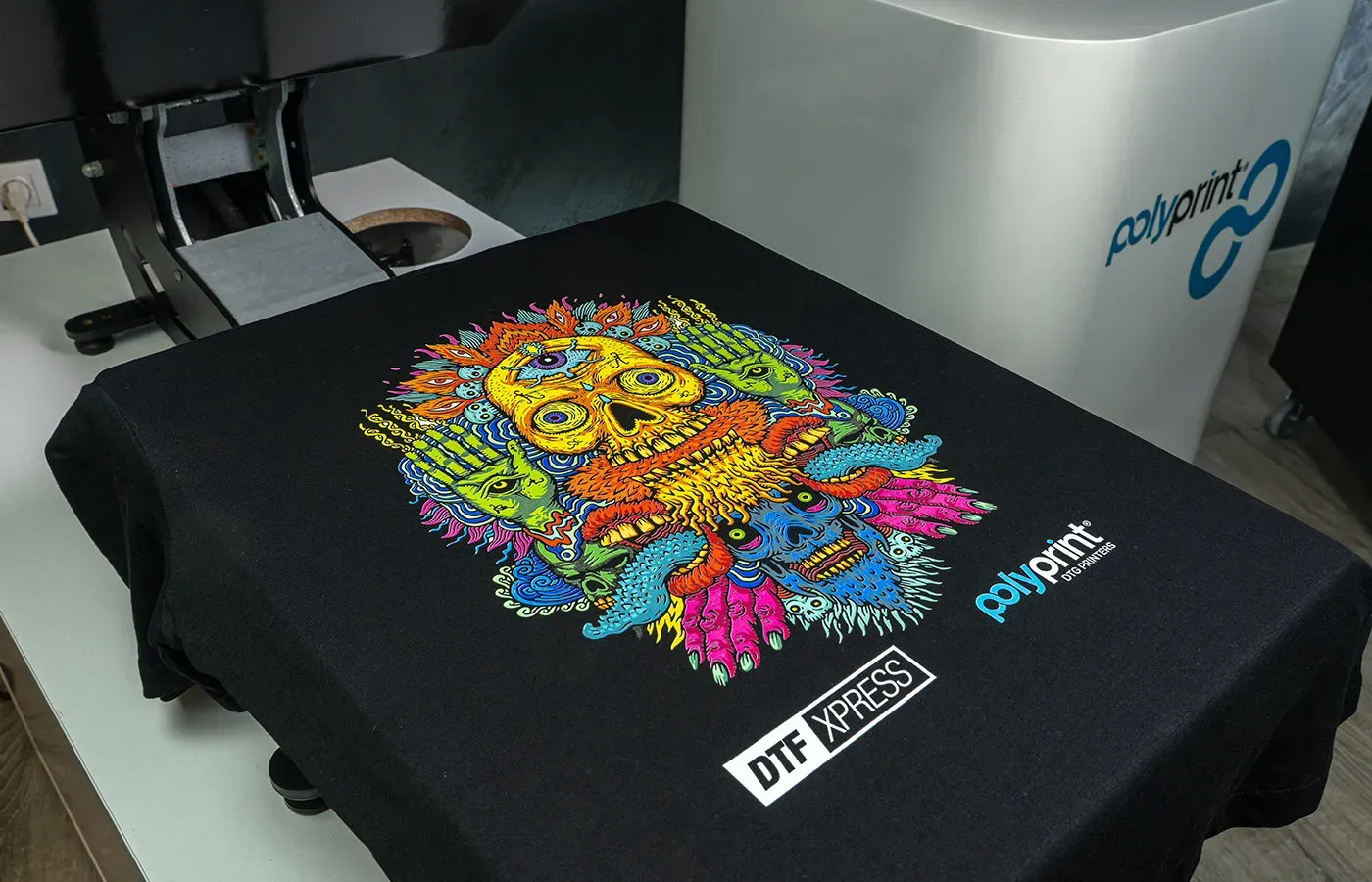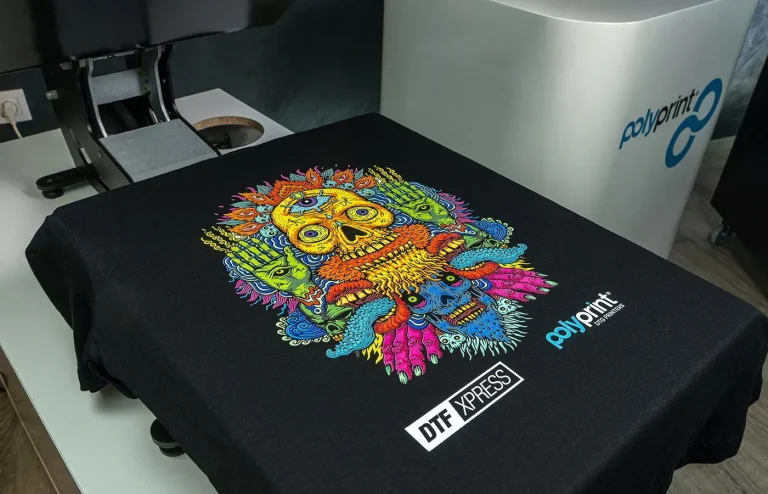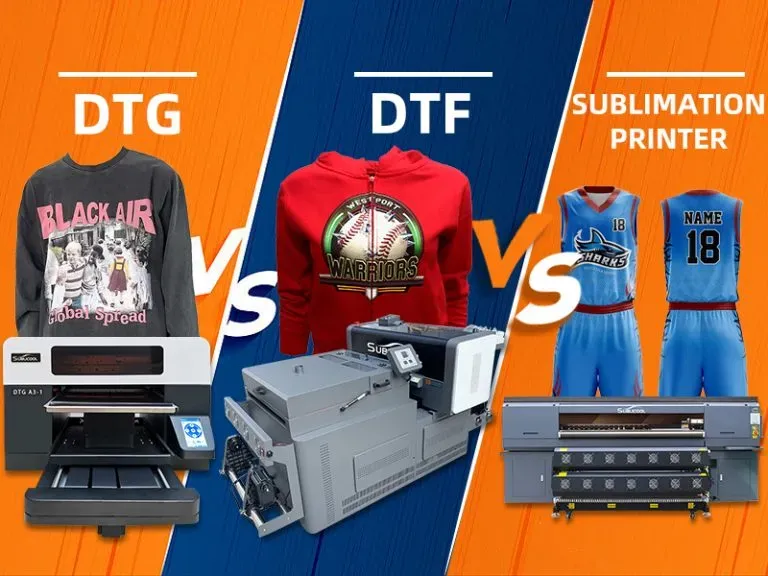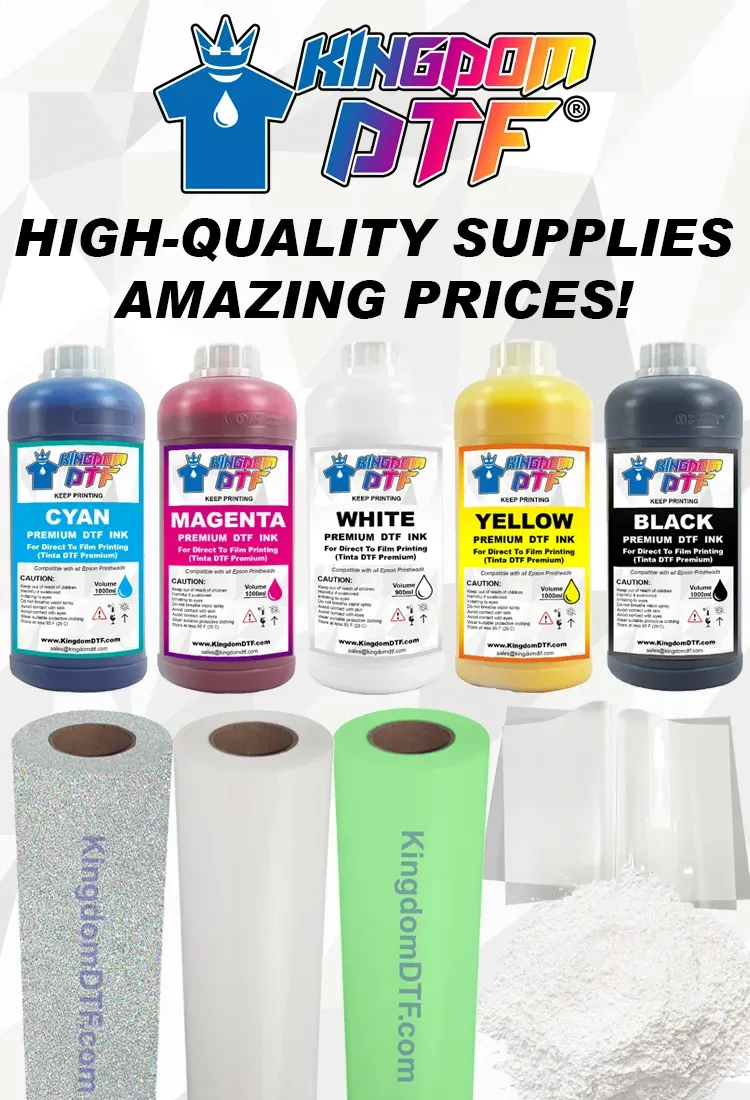DTF Printing: Unlocking the Future of Customization
In the dynamic realm of textile printing, DTF printing, or Direct-to-Film printing, is making waves as a standout technology. This innovative printing method is not just streamlining the process of custom textile printing, but it also elevates the quality and creativity involved in design. Brands and businesses are increasingly turning to DTF technology for its ability to deliver striking visuals with exceptional durability, aligning perfectly with consumer expectations for unique and personalized products. As we explore the nuances of DTF printing in this blog post, we will uncover how this technique enhances efficiency, promotes sustainable printing methods, and positions itself at the forefront of the future of printing. Buckle up as we dive into the transformational impact DTF printing holds for the industry and its stakeholders.
Direct-to-Film printing, often referred to as DTF, represents a cutting-edge approach in the world of custom textile printing. By leveraging advanced techniques, this printing style simplifies the transfer of designs directly onto a variety of fabric materials, allowing for intricate patterns and vivid colors to come to life. This modern method stands out from traditional processes, not only due to its ease of use but also because of its potential for sustainable printing methods, which appeal greatly to environmentally-conscious consumers. As the industry shifts towards personalized solutions, the future of printed textiles looks increasingly bright with the adoption of such innovative technologies. The integration of DTF technology into the fabric printing sector marks a significant step towards meeting the diverse demands of today’s market.
Understanding DTF Printing Technology
Direct-to-Film (DTF) printing technology is revolutionizing the textile industry by providing businesses with a way to produce high-quality prints with exceptional detail and color vibrancy. The process involves printing directly onto a specialized film before transferring the ink onto fabric using heat and pressure. This advancement in printing technology allows for intricate designs to be replicated with ease, making it ideal for custom textile printing projects. Unlike traditional methods, DTF printing does not require complex setups, significantly lowering the entry barrier for small businesses looking to experiment with customized apparel.
Moreover, the versatility of DTF technology makes it suitable for a wide range of applications, from fashion to promotional items. With the ability to print on various fabric types, including cotton, polyester, and blends, DTF opens up endless possibilities for creative expression. This ensures that businesses can cater to the diverse preferences of their customers, enhancing their overall satisfaction through tailor-made products.
The Environmental Impact of DTF Printing
As sustainability becomes an increasingly critical focus for companies worldwide, DTF printing stands out as a more environmentally friendly alternative to traditional printing methods. Unlike screen printing, which can consume large quantities of water and create significant waste, DTF technology utilizes minimal resources. This reduced environmental footprint is crucial as consumers become more environmentally conscious and seek brands that align with their values.
By adopting DTF printing, businesses not only contribute to sustainable practices but also tap into a growing market segment that prioritizes eco-friendliness. Innovative solutions, such as using water-based inks that are less harmful to the environment, further bolster DTF’s position as a responsible printing method. As the fashion industry moves towards greener alternatives, DTF technology will likely play a key role in driving sustainable printing methods mainstream.
Market Trends and Future of DTF Printing
The future of DTF printing looks exceedingly bright, with market analysts predicting substantial growth over the next decade. The continuous rise in e-commerce and the demand for bespoke textile solutions are expected to propel the DTF market into a billion-dollar industry by 2030. Businesses that leverage DTF technology are likely to experience increased revenue opportunities as consumers increasingly favor personalization and unique product offerings over generic options.
With DTF printing’s blend of quality and efficiency, manufacturers are poised to thrive in a competitive landscape. As more businesses recognize the potential of DTF technology, investment in this area will grow, leading to further innovations that enhance print quality and production speed. Adapting to these market trends will be crucial for businesses aiming to remain relevant and profitable in the ever-changing printing industry.
Versatility and Customization with DTF Technology
One of the standout features of DTF printing is its remarkable versatility. This technology allows businesses to create a wide variety of customized products, from fashion apparel to branded merchandise. The ability to print on a multitude of fabric types without altering the design or quality opens new avenues for brands looking to expand their product lines. As custom textile printing gains traction, DTF stands as a key player in offering high-quality, personalized solutions.
Additionally, DTF technology empowers creators by allowing them to push the boundaries of design. Businesses can easily produce small batches of custom printed items, making it feasible to cater to niche markets and limited edition collections. This flexibility not only enhances the customer experience but also encourages innovation within the industry as brands strive to keep up with the ever-evolving demands of their clientele.
Cost-Effectiveness of DTF vs. Traditional Methods
When it comes to financial viability, DTF printing offers a compelling advantage over traditional methods like screen printing. The lower startup costs required for DTF setups allow small businesses to enter the market without breaking the bank. Additionally, the process eliminates the need for extensive materials and labor, leading to considerable savings in both time and resources. This makes DTF an attractive option for emerging entrepreneurs looking to establish their footprint in the textile industry.
Moreover, the fast and efficient nature of DTF printing means that businesses can respond swiftly to market changes and customer needs. By reducing production times and minimizing waste, companies can maximize profits while also providing customers with high-quality, on-demand products. This cost-effectiveness positions DTF printing as a smart investment for businesses seeking to maintain competitive advantage in a rapidly evolving market.
Enhancing Customer Experience Through DTF Printing
With the integration of DTF printing into e-commerce platforms, the customer experience is undergoing a transformative shift. Brands can now offer interactive design tools that allow customers to create their unique designs in real time. This level of personalization enhances customer engagement, as individuals feel a deeper connection to products they help create. By visualizing their designs before placing an order, consumers are more likely to be satisfied with their purchases.
This improved experience not only drives repeat business but also fosters brand loyalty. As consumers increasingly seek out personalized shopping experiences, businesses that successfully integrate DTF technology into their operations stand to gain a significant competitive edge. By prioritizing customer satisfaction through innovative solutions, brands can differentiate themselves and build lasting relationships with their audience.
Frequently Asked Questions
What are the benefits of using DTF printing for custom textile printing?
DTF printing offers several advantages for custom textile printing, including cost-effectiveness, versatility across different fabric types, quick printing speeds, and high-quality, vibrant prints. This method enables small businesses to compete effectively with larger manufacturers while responding rapidly to consumer demands for personalized designs.
How does DTF technology compare to traditional printing methods?
DTF technology differs from traditional printing methods, such as screen printing, by allowing for intricate designs and vibrant colors to be printed directly onto a film, which is then transferred onto fabric with heat and pressure. This process is less resource-intensive and supports short-run productions, making it ideal for custom textile printing.
Is DTF printing an environmentally friendly option?
Yes, DTF printing is considered a more sustainable printing method compared to traditional practices. It uses significantly less water and energy, reducing waste and overall environmental impact. As sustainability becomes increasingly important to consumers, adopting DTF technology can help brands meet these ethical demands.
What advancements have been made in DTF printing technology?
Recent advancements in DTF printing technology include the development of high-speed printers capable of producing multiple colors with great precision without compromising quality. New ink formulations have also improved adhesion and durability, making DTF prints resilient to everyday wear and washing, ensuring long-lasting products.
How is DTF printing being integrated into e-commerce?
Many businesses are leveraging DTF printing technology to enhance their e-commerce platforms by allowing customers to customize products in real-time. This seamless integration improves customer engagement and experience, as shoppers can visualize their bespoke designs before completing their purchases, aligning with current trends in personalized shopping.
What is the future outlook for the DTF printing market?
The future of DTF printing appears bright, with analysts projecting it could evolve into a billion-dollar industry by 2030. This growth is driven by the rising demand for customized textile solutions in e-commerce, suggesting that businesses investing in DTF technology will likely enjoy significant returns as consumer preferences shift toward personalized products.
| Key Point | Description |
|---|---|
| What is DTF Printing? | A digital printing method that uses special film for vibrant designs applied to fabrics with heat and pressure. |
| Growing Popularity | Increasing adoption by retailers and manufacturers due to its ability to produce intricate and high-quality prints. |
| Technological Advancements | Printers have improved to render multiple colors quickly while maintaining quality, enhancing print precision. |
| Environmental Considerations | DTF printing uses less water and energy, making it a more eco-friendly alternative to traditional printing methods. |
| Market Projections | Expected to become a billion-dollar industry by 2030 as demand for customized fabric solutions rises. |
| Integration with E-Commerce | Allows real-time customization on websites, enhancing customer experience and brand engagement. |
| Advantages of DTF Printing | Cost-effective, versatile, fast, and produces high-quality prints, appealing particularly to small businesses. |
Summary
DTF printing is revolutionizing the world of custom textile printing. This innovative technology not only enhances print quality and efficiency but also addresses the growing demand for personalization and sustainability in the fashion industry. By utilizing Direct-to-Film printing, businesses can cater to consumer preferences for vibrant, durable designs while minimizing environmental impact. With its rapid integration into e-commerce and its potential for significant market growth, DTF printing is rapidly becoming an essential tool for modern brands aiming to thrive in a competitive landscape.







